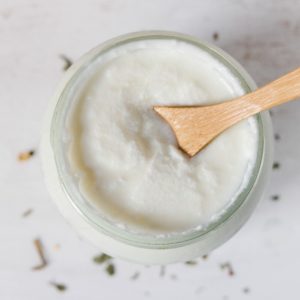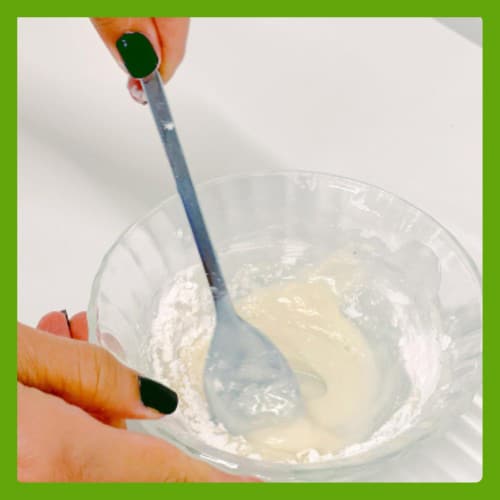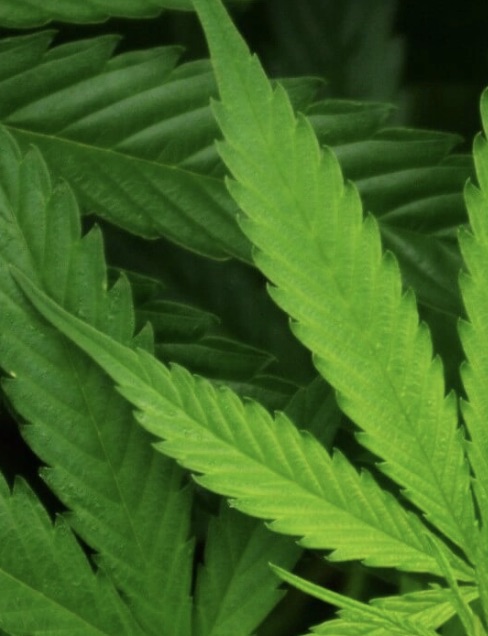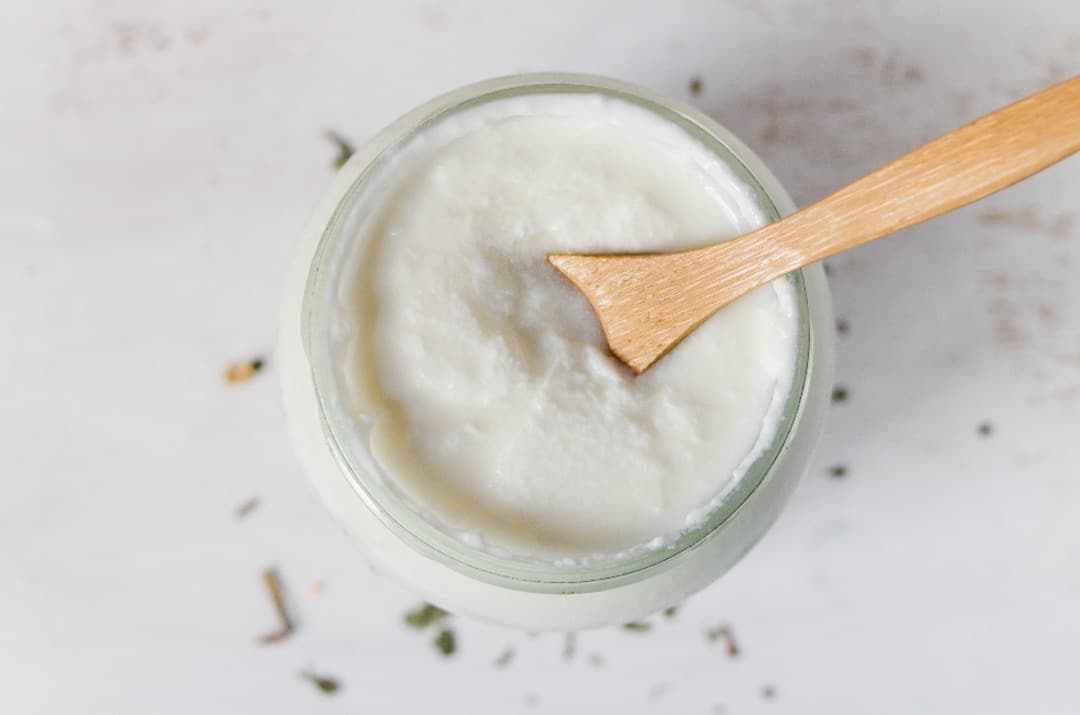Body odor creeps close to the top of a list of insecurities when venturing out in public. No one likes to smell or likes having to endure someone else’s offensive odor when working out at the gym or when crammed into close quarters like a conference room, elevator, or crowded train.
However, the potential dangers that deodorant and antiperspirants can cause has lent itself to many people – gasp! – giving up deodorant altogether or going the all-natural deodorant route, which can benefit your skin in ways that synthetic deodorant and antiperspirants cannot.
The Great Debate: Regular or Aluminum-Free Natural Deodorant?
The underarms, as with any place that generates moisture, are a rich breeding ground for odor causing bacteria. It sounds unpleasant, but it’s true. The bacteria that grow in the armpits love to feed on that moisture, and the waste leftover is what creates an unpleasant odor.
Enter deodorant.
But not just any deodorant. Should you go with regular deodorant, antiperspirant, or an all-natural variety? As already mentioned, there has been much debate on the safety of using regular deodorant and antiperspirants, namely due to aluminum, which has been questionably linked to breast cancer (although not substantiated with adequate research or supported by the FDA or American Cancer Society). Likewise, the link to aluminum and Alzheimer’s disease has been subject to much debate, with inconclusive results. Still, if you regularly shave your underarms, Dr. Yuka Hara, Director of Aging and Alzheimer’s Prevention at the Alzheimer’s Drug Discovery Foundation, advises against aluminum-containing antiperspirants shortly after shaving and to limit the use of them in order to avoid absorbing the small amounts of aluminum through the body, despite the body’s limited ability to absorb it and the kidney’s capacity to flush it out — alongside other toxins.
Regardless of the doomsday hype of aluminum-containing deodorants, many people attribute unnatural ingredients used in popular deodorants with health concerns — adhering to the philosophy, “if you can’t eat it, don’t use it.”
All that said and done, there has been some debate as to the efficacy of using an all-natural deodorant—be it a homemade recipe like the one we’ll discuss below or a store-bought variety.
So, which one is better?
Deodorants and antiperspirants contain a laundry list of hard-to-pronounce ingredients which gives pause as to whether or not those ingredients could possibly be good for you. Deodorants effectively combat body odor because they contain antimicrobials that kill bacteria. Antiperspirants fight that same bacteria by containing aluminum salts that act as little plugs for the sweat glands so bacteria can’t even get in there to cause a stink.
Antiperspirants, then, are quite literally clogging your pores. Sweat can’t get out adequately—nature’s way of cooling your body and helping you regulate your temperature.
Not to mention, they can also cause you to smell worse. This is because the aluminum salts found in antiperspirants fight off good bacteria living in your underarms as well as bad bacteria. The result is a smell that’s potentially more offensive than before you started using your favorite antiperspirant brand with reckless abandon.
Additionally, a number of those unnatural ingredients found in deodorant can do a number on your skin, especially if you have sensitive skin, in general. In addition to being bacteria’s oasis, the skin of the armpits is thin, which makes them prone to breakouts. Many antiperspirants contain alcohol, which can be extremely drying, cause redness, and underarm irritation. Perfumes and fragrances can also cause rashes and other skin irritations.
<<Soothe Your Skin Naturally>>

All-natural deodorants are usually gentle on the skin. The all-natural varieties, in fact, contain ingredients that are beneficial for the skin and, as a result, beneficial for your body. All-natural deodorants contain natural pH balancers that actually work to improve your underarms’ ecosystem the more you use them. Plus, they also contain skin conditioners that can be super nourishing for your skin rather than drying it out and perpetuating breakouts and irritation.
That said, some people do have allergies to natural ingredients like baking soda, lichens, and certain essential oils. So be sure to test a small amount of your store-bought natural deodorant or homemade natural deodorant first.
Using Aluminum-Free Natural Deodorant
As with our guts, the armpits are supposed to maintain a certain level of healthy bacteria. Antiperspirants, especially, can cause new bacteria to grow that can, in turn, cause even more body odor than before. You can easily make your own deodorant using common ingredients you may already have at home. If not, most of these ingredients are available at your local supermarket or online. It’s crucial, however, to make a deodorant that works with your body chemistry so as not to promote the growth of any new bacteria and wind up smellier than you were before. Plus, making a deodorant that works with your body chemistry can also influence the way you’re received by others.
You can buy many great natural deodorant and antiperspirant brands like Tom’s of Maine, JASON, Crystal online or at your local health food store. Or you can make your own.
<<Enjoy a Soothing Massage With the Benefits of Aromatherapy>>

Learn About the Ingredients in Your Aluminum-Free Natural Deodorant Recipe
You can make your own natural deodorant with common household ingredients you probably already have. Most of the ingredients you will need is actually in our products, including tea tree oil, lavender essential oil, frankincense essential oil, myrrh essential oil, coconut oil, and even CBD hemp oil — among just a few other natural ingredients.
Baking soda and/or arrowroot powder
You need something to absorb your sweat and an ingredient like baking soda, arrowroot powder, or even cornstarch will do just the trick. I personally prefer to use a mix of baking soda and arrowroot powder. Arrowroot has a silky texture and absorbs moisture, a great host for toxins and bacteria, which can cause odor. Similarly, baking soda absorbs moisture, but it is a slight bit grittier.
Note: If you are using baking soda, however, be sure to do a small batch test first, as some people can be allergic.
Beeswax or soy wax (Optional)
Many DIY deodorants can take on a soft consistency, especially as the temperature of the room changes. Beeswax or soy wax can give your all-natural deodorant a harder consistency, mirroring that of most store-bought, regular deodorants. Plus, beeswax has long since been considered a conditioning agent with hypo-allergenic properties. However, vegans may prefer to replace beeswax with soy wax, another great emollient.
Note: Beeswax is much denser and waxier than soy wax, thus so if you opt for this method, you may want to add more than the suggested amount if the texture is too thin for your taste.
Coconut oil
Coconut oil is often used in hygiene routines from facial cleansers to a primary ingredient in natural deodorant. It can hydrate the skin and promote healthy skin.
Shea butter
Shea butter is a moisturizer rich in vitamins A and E, both of which are notoriously beneficial for your skin. Shea butter is also non-comedogenic, meaning it won’t clog pores, and it promotes the skin’s natural production of collagen which will keep your underarms feeling soft and silky smooth.
Tea tree essential oil
Like coconut oil, tea tree is used in cleansers and cosmetics due to its ability to promote healthy-looking skin. Some people are sensitive to tea tree oil, so we recommend testing a small amount on your skin first.
Other essential oils
Adding a few drops of other essential oils like lavender, patchouli, grapefruit, lemongrass, frankincense, myrrh, or sandalwood can add a lovely natural fragrance to your deodorant while boosting aromatherapy benefits, as well.
Frankincense and myrrh are age-old partners dating back to biblical times when they were used as fragrances among additions to herbal remedies. It’s a great combination for men who like a more woody smell, especially if you are heavier on the myrrh.
Lavender and patchouli also pair well together for those who appreciate a floral aroma.
CBD oil
This is another excellent ingredient that makes an excellent addition to any homemade deodorant recipe because it can keep your skin adequately hydrated.

Easy DIY Aluminum-Free Natural Deodorant Recipe
Equipment
- mixing bowl
- Container with a removable lid to store the final mixture. (You can use an old deodorant container if you add wax.)
- 2 Heat-safe glass pots or regular stainless steel pots (Some people advise you not to use aluminum in the preparation process, because metal can react to essential oils or vice versa)
- Stainless steel or glass spoon(s)
- Measuring cups and spoons
- dropper
Ingredients
- 2-3 Tbsp coconut oil
- 2-3 Tbsp shea butter
- 1 dropper CBD oil (optional)
- ¼-¾ cup arrowroot powder (or corn starch)
- ¼-¾ cup baking soda
- 1-3 drops tea tree oil
- 15-20 drops your favorite essential oil (lavender, frankincense, cederwood, lemongrass, and ylang ylang, and patchouli are popular choices- mix and match 2 or 3 to make your unique scent)
- 1-2 Tbsp beeswax or soy wax
Instructions
- Put the coconut oil and shea butter (and optional wax and/or CBD hemp oil) in the smaller pot/container. (You can skip step 1-3 if you live in a very hot climate and the ingredients are already liquid—unless you are adding wax).

- Add water to the larger pot and place the small pot with the oils.
- Bring the water to a boil and then decrease the heat to a simmer.
- Once the ingredients are melted, add the essential oils.

- Mix the shea butter, coconut oil, and essential oils together.
- Remove the mixture from the stove and turn of the stove.
- Add the arrowroot and/or baking soda powder.
- Mix the ingredients together until they are homogenous. The mixture should have a thick, creamy texture like icing for a cake.

- Scoop the mixture into a small storage container. (If you are using a plastic container, make sure the mixture is not too hot to melt it. This is a tricky balance since a product with wax will cool fairly fast, but most deodorant containers are made of plastic).

- Cool at room temperature. You can place the container in the fridge if you’d like to speed the process along. Note: If you live in a hot climate, you may want to keep the deodorant in the fridge. You’ll want to label it appropriately and warn anyone who lives with you that this icing-like product in your fridge is not for eating, although the smell could be tempting).
Notes
Final Takeaway
Remember, the underarms are microbiomes, and after repeated use of chemical-laden deodorants and antiperspirants, the pH can be thrown out of whack, thus causing an unpleasant odor. When you begin to use an all-natural aluminum-free deodorant, you might need to give it a few weeks to allow your underarms’ pH to regulate itself and get you back to smelling fresh.
At CBDMEDIC™, we know the importance of using all-natural ingredients, as all our products contain primarily natural ingredients of the upmost quality with the goal of improving your overall health and well-being. We know the value and benefits these ingredients can have and encourage you to use natural products because without your health, what else is there?
Please leave a comment and tell us how your homemade natural deodorant recipe worked for you. And be sure to check out our other recipes for a healthy skin and body.

Disclaimer: This information is for educational purposes only. It has not been approved by the FDA to diagnose, treat, prevent, cure, or mitigate any diseases or conditions. We use CBD in our products for cosmetic purposes only.

